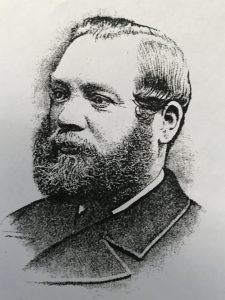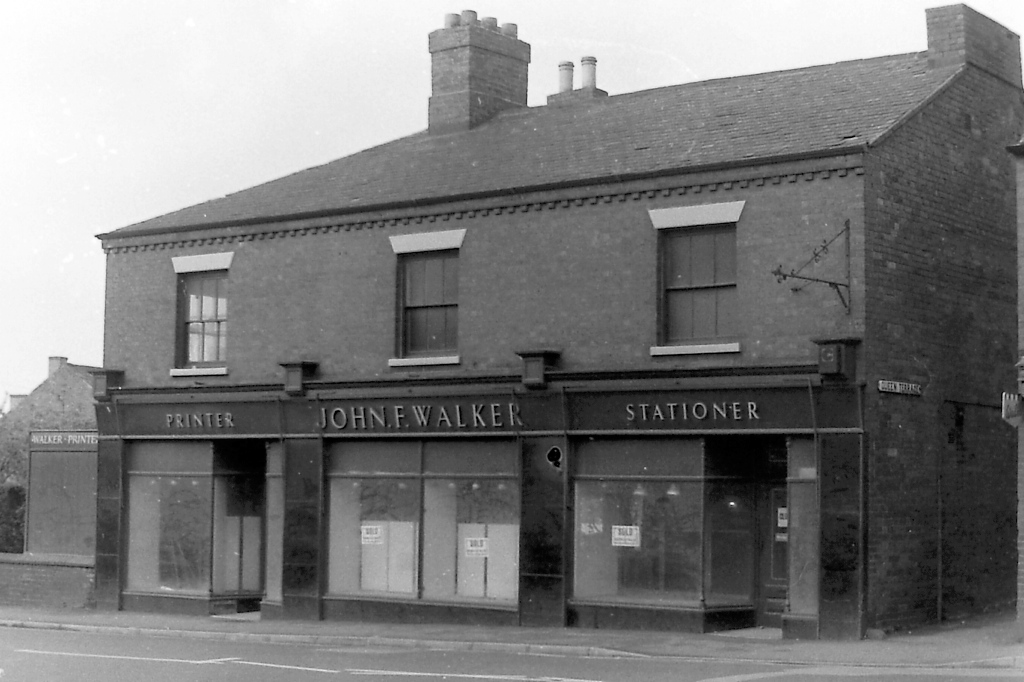Having successfully answered all the questions in Part 7, you are now ready to move on …
At last … another writer joins the ‘discourse’.
Letter 28 (dated May 27th 1892)
Ilkeston sixty-four or five years ago .. (ie about 1828)
Sir, --- I had the pleasure a short time back of looking through the Pioneer, and I could see the name of good old Mrs. Thomas Straw, of Ilkeston toll bar. I must say it made me think very much of bygone days, for I and my sister went to her day school, and we had great reason to respect her. My father at that time was very fond of his drink, I am sorry to say, but we had a good mother, and good Mrs. Straw would often give us something to eat and clothes onto our backs. She was a kind old Church lady; and her son, Norman, I knew well. On Sunday we went to the Church school, where Norman also attended, but he was my junior. I was pleased to hear that he is still living. He was a nice little singer at that time in the Church Sunday School, and I can assure you that he was very much noticed by the Rev. R. Moxon. Mr. Smedley was the leader at that time of a fine set of singers. .... I will name a few --- Messrs. Smedley (the leader), W.Wilson, J.Hallam, J.Bennett, John Goddard, W. Shaw, John Scattergood, John Hawley, W.Warner, T.Warner, Isaac Goddard, Rodgers, C.Rodgers, W.Rodgers, Bamford, J.Smith, W.Tunnicliffe, John Shepherd.
Now I will say a little about my Sunday school teachers. Old Mr. Small was superintendent. His son George was a teacher, as were Mr. Thomas Straw, Mr. J. Wheatley, Mr. James, Mr. R.Coxen, and Mr. Morris. The girls, school teachers were -- Miss C. Parkinson, Miss Latham, Miss Brentnall, Miss M.Straw, Miss Sills, Miss Wilson, Miss Meakin, Miss Hawley.
At that time there was a good set of ringers, and a fine band in the town. Mr. W. Wilson was the leader, and Mr. John Goddard was a fine player on the trombone.
I well remember a few old ones who lived round the Market-place -- Mr. Hobson, Dr. Parkinson, Mr. John Hawley, Mr. Paul Walker, Old Phoebe Severn, Mr. Shardlow, Mr. Thomas Harrison, Mr. Pike (schoolmaster), Henry Sills (baker) and his fine cherry tree over the door, Mr. West (draper), and Mrs. Catherine Marshall. Mr. Jackson, King's Head,; Mr. Mark Attenborough, Sir John Warren; Mr. John Mason, schoolmaster; Mr. T.Warner, Mr. B.Tatham, and Mr. Henry Robinson, who kept the Rising Sun. Old Robert Burgin lived on the rock, and there was a butcher's shop in the Market-place..... also Robert Sharpe driving a coach to Nottingham. Robert Burows drove one as well, as did Mr. Rowlinson of the Three Horse Shoes --- A Native
Question 141. George Small is mentioned as a Sunday School teacher, but what was his 'day job' ?
Question 142. And what was George's 'official role' ?
Question 143. Where did Phoebe Severn live ?
Letter 29
About a fortnight later Enquirer came back with another letter. He had recently visited Ilkeston, meeting John Cartwright and 'Man' Barker, son of John of the Bridge Inn on Awsworth Road.
Many years ago a lady living in one of the cottages near the Bridge Inn was preparing the social meal that the Poet Cowper was so fond of (or the cup that cheers but not inebriates). She had placed a pound of beautiful fresh butter on the table, and while she was turned round to poke the fire to make the kettle boil, a greyhound dog, kept by Mr. Barker, went into the house, and, seeing the tempting morsel, grabbed it, and was off with it. The woman ran after the dog, poker in hand, vowing vengeance. Mr. Barker was near, and seeing at once what was the matter, seized the dog and made him part with his ill-gotten gains; but the sorrowful expression of that poor dog's face was enough to melt a heart of stone -- not for what he had done but for what he had not done.
As there is an election pending, it would be interesting to give us a few particulars of the election of 50 years ago, when Mundy and Colville put up. I remember seeing an old man named Tommy Dodd (he lived somewhere in Bath-street; they covered him all over in yellow clay and carried him shoulder high up Bath-street, down South-street, down to Kensington, to the front of the Needlemaker's Arms. I also remember there were 'Blue' and 'Yellow' public houses, where there was ale for the men, and free teas for the women. And the ladies were equal to the occasion. They had two sets of head gear. They carried one set of caps in their pockets. If it was a blue house, they put on a blue cap, and if it was a yellow house they had a yellow ribboned cap ready.
There lived at Kensington at that time, a Mrs. Marshall, they were grocers and bakers. She was a thorough 'Blue'. We used to call her the Little Queen. Her feelings got the better of her judgment, and she made things unpleasant for one of her neighbours. There were no waterworks then and water was scarce. They boycotted the Little Queen, and would not let her have any water until the mischief was undone. It so happened that where the houses were that had wells they were yellow, so they told her they had no blue water; it was yellow water. All was made right; no malice was borne, so the Little Queen was allowed to have water.
Question 144. What did it mean if a public house was 'Yellow' ?
Letter 30
Another fortnight passed and then, at the end of July 1892, a lengthy lettter from John Cartwright, much of it general gossip.
In a recent number of the Pioneer I noticed the announcement of the death of a lady I remember over 50 years since, namely that of Mrs. Jane Shaw, the widow of Ralph Shaw. She was born June 18th 1804, so was a girl of 11 when the battle of Waterloo was fought, and I am writing this on the 77th anniversary of that memorable event. Had the old lady lived just another month she would have been 88 years old.
Question 145. Where did Ralph Shaw live ?
Question 146. What was his trade ?
I had a look in at your fine old church..... I had a quiet look round the churchyard, and saw the names of many people whom I had known when a lad. The inscription on one monument rather puzzled myself and my nephew, who accompanied me .... "Fanny, relict of Samuel Blake Norman, surgeon, who died at Swansea, Glamorganshire, Feb 10, 1842. Died Feb.15, 1830, aged 80 years". I suppose there have been parenthesis marks, which must have worn away.
Question 147. Any idea why Samuel Blake Norman died in Wales ? (No clues for this I am afraid)
Question 148. Who was the elder son of Samuel and Fanny ?
Question 149. Where did he live?
Question 150. What was his profession ?
Question 151. Can you see the mistake that John Cartwright has made in his transcription ?
At this point John continues by quoting from a letter he received recently from a friend (most probably William Strangeway ... see below). The friend gives more clues to the identity of 'O.P.Q.'
Thomas Bamford, whom you mention, married for his first wife (he had three), my father's sister Mary. 'O.P.Q.' was the brother of my aunt Henshaw (William's wife) and Sir James Outram's brother married her sister Sarah, and one of 'O.P.Q.'s' brothers was a page of the Dowager Queen of William the IV ...
Thomas Bamford was a blacksmith who lived on Ilkeston Common ... he was baptised in February 1794 and died on February 3rd 1853, and during that time he managed to squeeze in three wives. The first one was Mary Strangeways, daughter of John and Mary (nee Thompson), whom he married on Christmas Eve, 1811. She was an older sister of Matthew Strangeway who married Nelly Henshaw on June 1st 1824 ... and one of their sons was William Strangeway who joined this letter conversation, with Letter 17 He was probably also the writer of the letter which John Cartwright quoted in his Letter 30 above.
Letters 31 and 32
Letter 31 is dated Aug 5th 1892 and is written by Enquirer but contains only personal gossip with John Cartwright, who come back with Letter 32 (Sept 2nd 1892). At this point he was desperately trying to keep "Ilkeston Fifty Years Ago" alive as well as the idea of a reunion.
It seems that John had just made another visit to Ilkeston and he writes ...
South-street brought to mind Mr. Thompson , the ropemaker, 'the man with big whiskers' my dad described him. The latter wore, and believed in, 'mutton chop whiskers' ... Higher up the street was Burgin's blacksmith's shop, close by the cooperage of old friend Bostock, who some years ago was living in Burton, where he would find ample scope for his talents as a builder of casks; his neighbours Mrs Hawley, and the Toplis family, and Matthew Fletcher (before he turned publican) being all well known people at the time named. Mr. Isaac Burgin's house and shop, garden and orchard, have long ago made way for the builders. A foot way ran at the back of the premises and led towards West Hallam, passing Sanders' orchard..... Near by was the parish pump, close to which resided the old and respected Harrison family, the head of whom played the bassoon at the old Wesley Chapel hard by, the choir of which also included his son Henry, who, like his father, was also a member of the Ilkeston Brass Band, in the days of the Goddards, Fred Flint and others as well known.
Question 152. As well as rope what else did William Thompson make ?
Question 153. Who was Burgin the blacksmith ?
Question 154. Where was Joseph Bostock's cooperage in relation to Burgin's smithy ?
Question 155. Which public house was later home to Matthew Fletcher ?
Question 156. Who was head of this respected Harrison family ?
The first electric shock I received was in South-street, at old Mr. Birch's, the joiner, and I well remember jumping backwards a good distance when I touched the battery handle. Other names that occur just now are those of Tomasin (horsebreaker), Kelly, Pressland, Charles Haslam, Pollard (bootmaker), S. Richards and Luke Wright (grocers), and Richard Evans of the Potteries.
The range of properties just opposite (the Butter Market in the Lower Market Place) were occupied over 50 years ago by Mr. Harrison, who was followed by Mr. Buxton, and afterwards by Mr. Thomas Merry, whose business qualities founded the successful trade now carried on by his son, Mr. Alderman Merry.
Question 157. James Tomasin was the horse breaker and a colourful character he was. But where did he live ? (You will have to search hard)
Question 158. Thomas Pollard of Cotmanhay was the bootmaker. Who was his son who lived in the Lower Market Place ?
Question 159. What trade did Thomas Harrison, John Buxton and Thomas Merry have in common ?
Question 160. Who was Alderman Merry ?
Bonus Picture Question … who is this, and how is he linked with Letter 28 ? … the clue is in the second picture.
Who do you think they are ?
The writer of Letter 28 signs himself ‘A Native‘ Not a lot of clues to his identity, save that he is older than Norman Straw.
In Letter 30 you are given more clues about the identity of ‘O.P.Q.’ though some of them, I believe, are misleading !!
Onto the (bumper ?) Part 9




